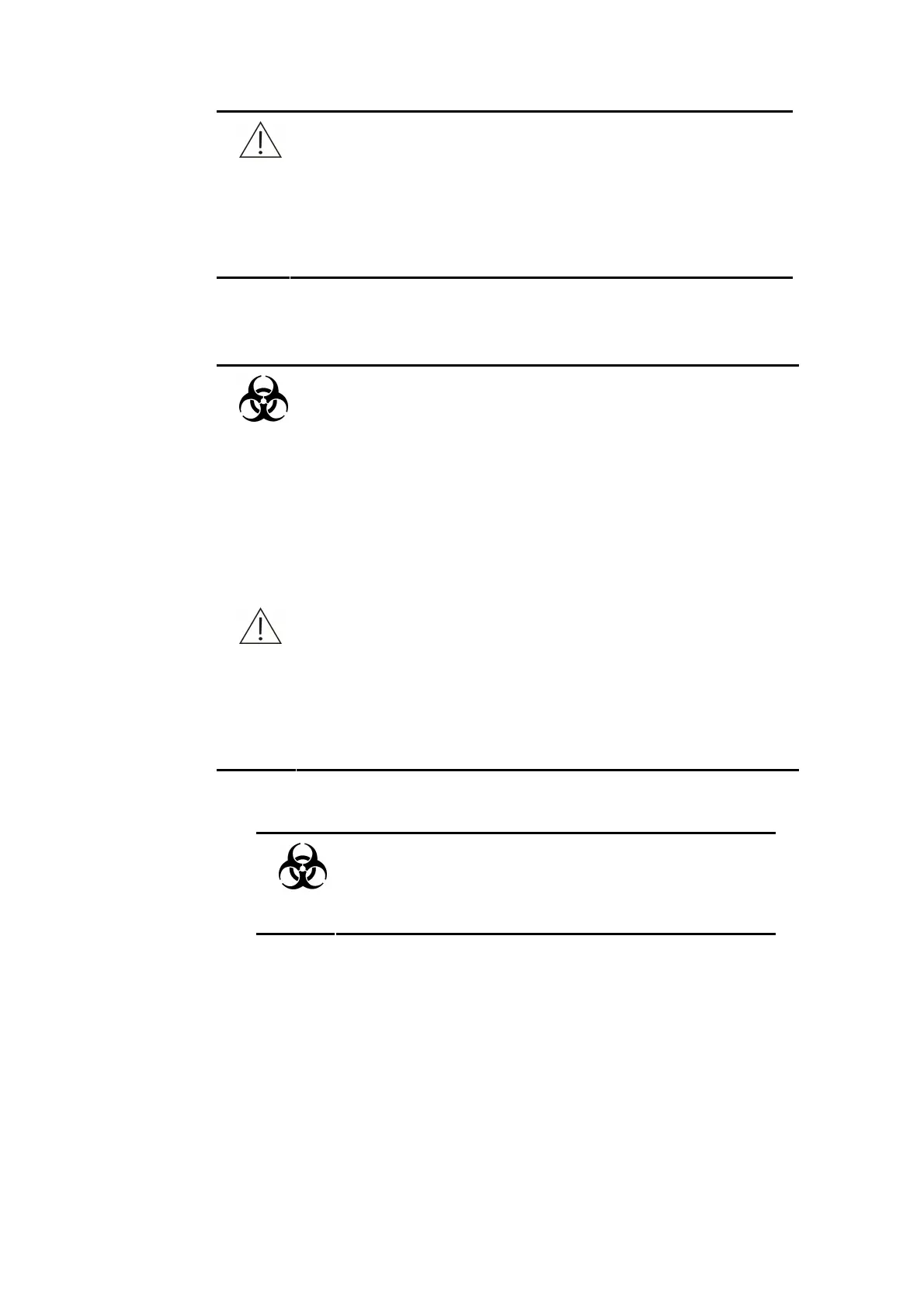7-12 7 Service and Maitenance
NOTE
The tank should be cleaned every week. Use brush to clean the
tank walls if necessary. Check for contamination and impurity on the
tank walls and bottom, after cleaning.
If the tank will not be used for a long time, put it upside down to
drain the water and then store it in dry and clean environment.
Clean it with water before reusing.
7.3.6 Washing Waste Tank
BIOHAZARD
In case your skin contacts the sample, control or calibrator, follow
laboratory safety procedure and consult a doctor.
Exercise caution and do not spill the waste onto other people or
things.
Dispose of the wastewater in accordance with your local or national
guidelines for biohazard waste disposal, and consult the
manufacturer or distributor of the reagents for details.
Dispose of the used gauze in accordance with your local or national
guidelines for biohazard waste disposal.
CAUTION
When placing the waste tank, ensure the height difference between
the top of the tank and the bottom of the upper cabinet is within
500-800mm.Ensure the deionized water pickup tube is not blocked,
bent, or twisted.
A blocked, bent or twisted waste tube may lead to wastewater
overflow that may damage the analyzer.
1
Place the Power to OFF.
2
BIOHAZARD
After removing the cap of the waste tank (together with the
tube and sensor), place it on an appropriate place to avoid
biohazard contamination.
Unscrew (counter-clockwise) the tank cap and remove it together with the
waste tube and the sensor from the tank.
3
Empty the waste tank.
4
Wash the tank interior with clean water. Soak the tank with disinfector if
necessary.
5
Wash the waste tube and the sensor with clean water.
6
Wipe water off the tank exterior, waste tube and sensor cable with clean
gauze.
7
Screw (clockwise) the cap (together with the waste tube and the sensor)
back onto the tank until secure.

